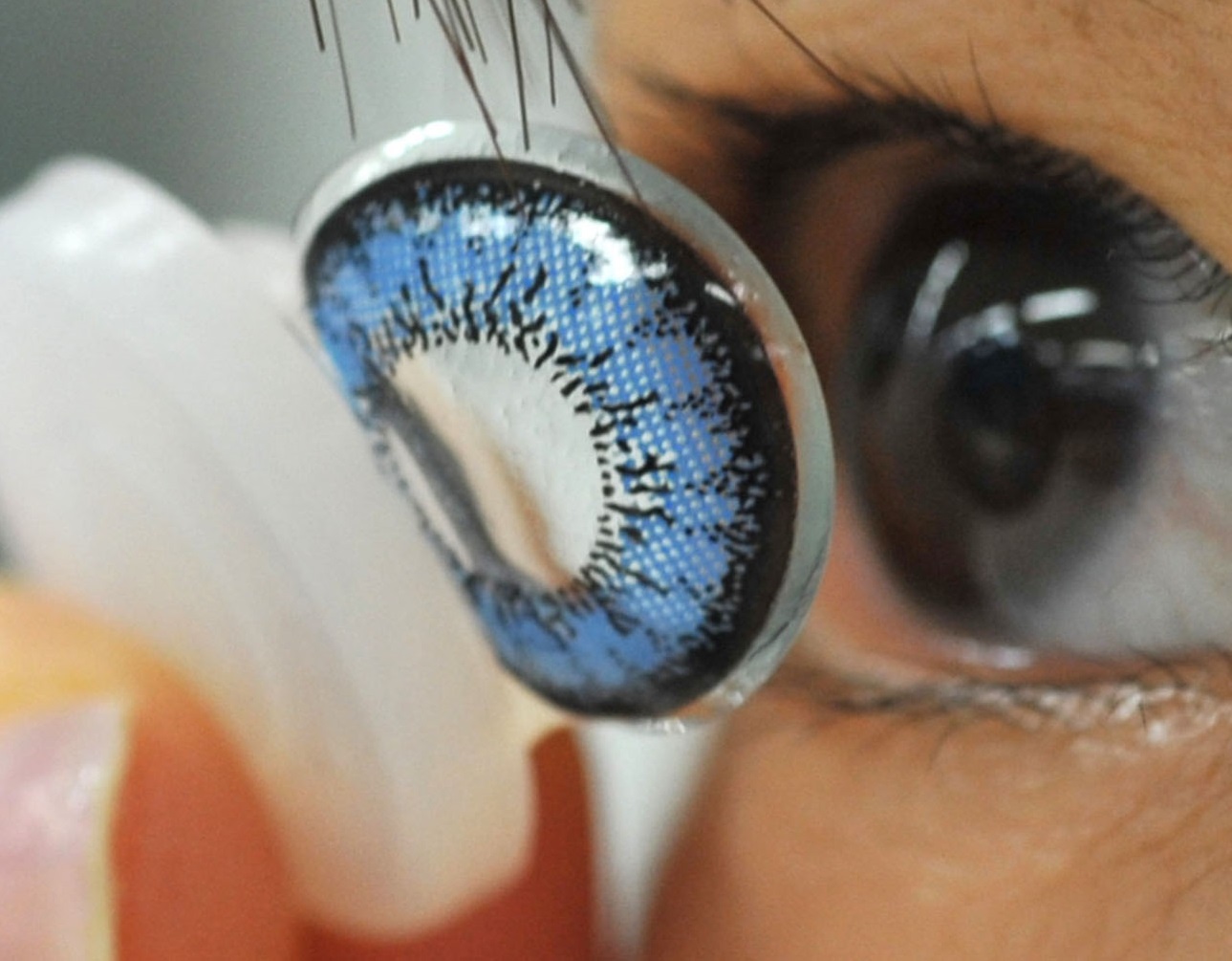Contact lenses have become a popular choice for millions of people worldwide, offering a convenient and versatile alternative to glasses. Choosing the right contact lens base curve is essential for ensuring comfort, clear vision, and maintaining eye health. In this article, we will explore the importance of contact lens base curve and how to choose the correct one, such as base curve 8.4 vs 8.6.
Table of contents
Estimated reading time: 6 minutes
What Is The Base Curve On A Contact Lens?
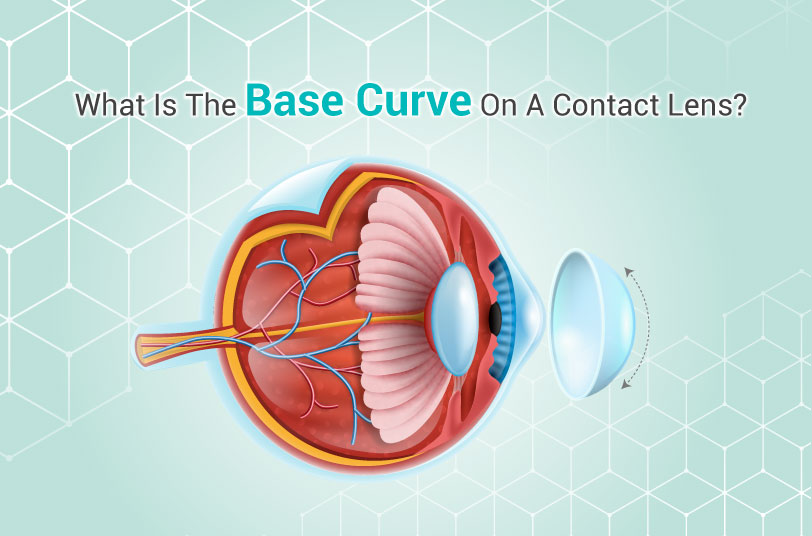
The base curve (BC) is a crucial aspect of contact lenses that determines how well the lens fits the eye. It is the curvature of the inner surface of a contact lens, which helps it conform to the shape of the cornea. The base curve is usually measured in millimeters (mm) and is typically expressed as a number like 8.4 or 8.6.
Studies show that a single base curve of 8.4mm managed a “good or better” fit in approximately 90% of individuals, and base curves of 8.4mm and 8.6mm together encompassed 98% of individuals.
Do These Numbers Mean Anything?
Typical base curve values range between 8.0 and 10.0 mm. In some cases, it can be as flat as 7.0mm, especially if you have a rigid gas-permeable lens. The baseline is that a person with a higher base curve number has a flatter cornea compared to someone with a lower base curve number, which indicates a steeper cornea.
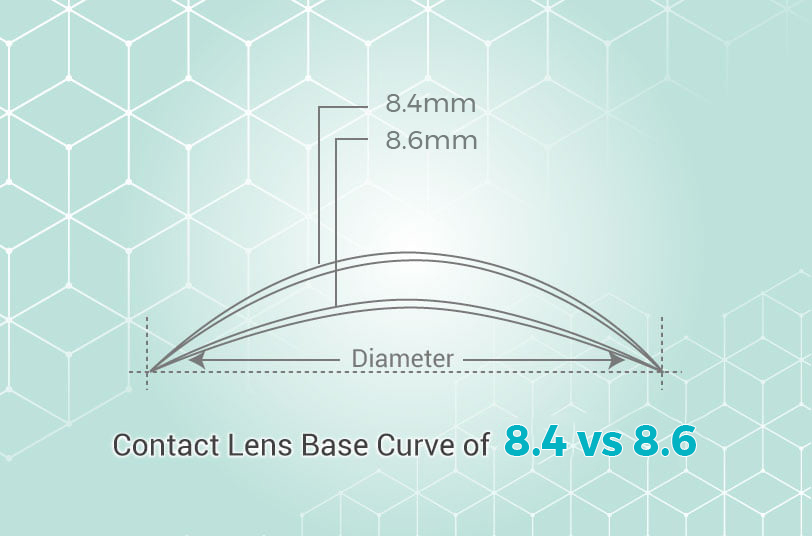
Example: Base Curve of 8.4 vs 8.6
The difference between an 8.4 and 8.6 base curve may seem small, but it can significantly impact the fit and comfort of your contact lenses.
An 8.4 base curve is slightly steeper than an 8.6, which means it will fit more closely to the eye’s curvature. Some people may find that an 8.4 base curve fits better, while others may prefer an 8.6.
- If contact is too loose, it may be uncomfortable, fold, or come right out.
- If it’s too tight it may be comfortable at first but later cause irritation.
It is essential to work with your eye care professional to determine the best base curve for your individual eye shape and needs.

Why Is Contact Lens Base Curve Important?
A well-fitting contact lens should provide comfort and be barely noticeable on the eye. An incorrect base curve may cause the lens to sit too tightly or loosely on the cornea, leading to discomfort, irritation, or the lens falling out.
Proper oxygen permeability:
Oxygen flow to the cornea is essential for maintaining eye health. A contact lens with the appropriate base curve ensures that there is enough space between the lens and the cornea for oxygen to pass through. An ill-fitting lens can restrict oxygen flow, potentially leading to complications such as corneal neovascularization.
Clear vision:
A correctly fitted contact lens base curve will provide optimal vision quality. A lens with an inappropriate base curve may cause distorted or blurry vision. Reduced risk of complications: An ill-fitting lens can increase the risk of complications such as infections, corneal abrasions, or inflammation. Choosing the correct base curve helps reduce these risks.
Does Contact Lens Base Curve Matter?
Ordering contact lenses with a base curve that is different from your prescription can damage your eyes and cause problems with vision. This is especially important for people who purchase cosmetic colored contact lenses, which are often of a standardized size.
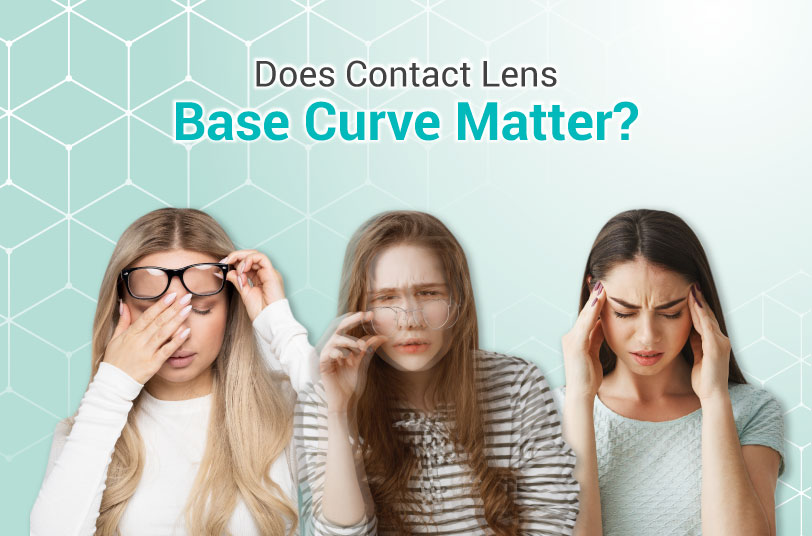
Wearing poorly-fitting contact lenses can damage the eye and cause problems such as blurred vision, headaches, and eye strain. The diameter and base curve of a contact lens are two measurements that affect how well they fit your eye.
Read more: Will The Wrong Base Curve of Contact Lenses Cause Discomfort?
Anyone who wants to buy a contact lens should know the necessary parameters. The contact lens parameters can be found in the prescription written by an eye doctor and are different from your regular spectacle prescriptions.
It is also good to take note of changes in your base curve and diameter whenever you’re getting a prescription for new contacts as these parameters often change with age.
How to Choose the Correct Base Curve
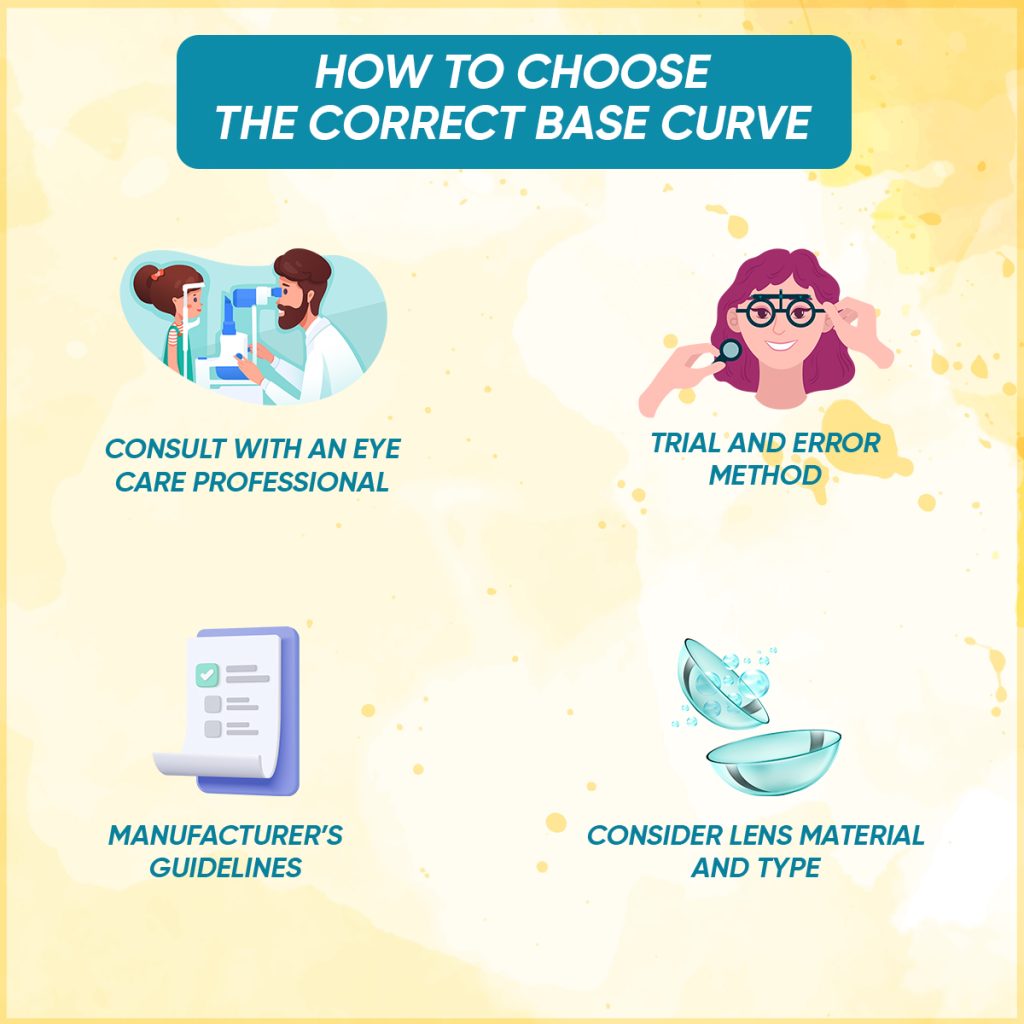
Consult with an eye care professional:
The best way to determine the appropriate base curve for your contact lenses is to consult with an eye care professional. They will measure your cornea’s curvature and recommend suitable contact lenses based on the measurements.
Trial and error method:
Some contact lens wearers may need to try out different base curves to find the most comfortable fit. This trial and error method should be done under the guidance of an eye care professional to ensure safety and proper lens fitting.
Manufacturer’s guidelines:
Contact lens manufacturers often provide guidelines for selecting the appropriate base curve based on the lens type and material.
Consider lens material and type:
The contact lens material and type can also influence the selection of the base curve. Some materials and designs may require a different base curve for optimal fit and comfort.
Conclusion
Understanding the importance of contact lens base curve and how to choose the correct one is crucial for contact lens wearers. An appropriate base curve ensures a comfortable fit, clear vision, and reduces the risk of complications. As contact lens technologies continue to advance, it is essential to stay updated on the latest developments and work closely with your eye care professional to select the best contact lenses for your unique needs.
Check out our site for all your contact lens needs.
Do you know contact lens cleanliness also plays an important role in ensuring eye comfortability?

Related Articles

